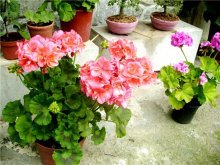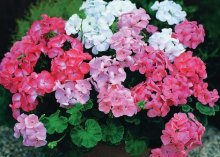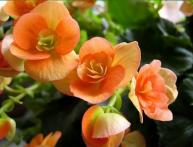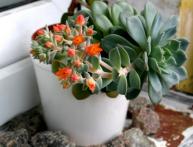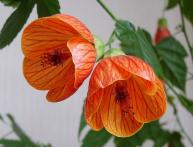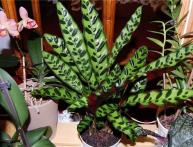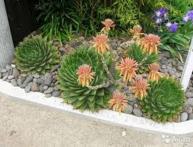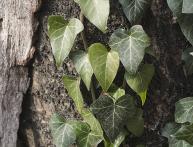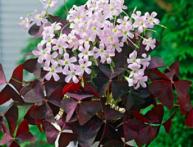Indoor geranium flowers: growing and caring for flowers

One of the most popular indoor plants is geranium. More recently, having such a flower at home was considered tasteless and old-fashioned. Nowadays, everything is somewhat different, since now it is possible to purchase a wide variety of types of geraniums, or, as they are also called, pelargonium, in a flower shop. They amaze with their size and color so much that no one can help but pay attention to these plants. Gradually this flower appears again on balconies and window sills.
In addition to its unusual beauty and color, pelargonium is not fussy to care for, is rarely susceptible to disease, and easily tolerates poor conditions. The most unpretentious in home care are fragrant geraniums.
Their flowers are not brightly colored, but this plant emits a strong, persistent pleasant smell, which also has an antibacterial effect, killing pathogenic microbes and bacteria in the air. These substances released into the air by pelargonium have a healing effect on the cardiovascular system of the human body and help with diseases of the upper respiratory tract.
Content:
- Caring for pelargonium at home
- Transplantation and propagation of indoor geranium
- Problems in care and diseases of pelargonium
Caring for pelargonium at home
Since geranium is a plant that came to us from the south, namely South Africa, it is quite light-loving.In winter, it is recommended to place it where natural light reaches most. If possible, it would be a good idea to transplant geraniums into the ground outside in the summer. This promotes the appearance of new leaves and flowers. If the geranium is already blooming, you need to feed the plant, this will make the color of its flowers brighter and these flowers will grow more magnificently and faster.
Will fit well liquid fertilizers, diluted in ordinary water for irrigation. The plant needs such feeding once every two weeks in the summer. In the winter season, there is no need to fertilize geraniums. The flowering period of geraniums begins in early spring and ends in mid-winter. The temperature regime should be observed; for pelargonium, the most comfortable temperature is 20 C.
However, if it gets colder and the temperature drops slightly at night, nothing bad will happen. It is better to avoid drafts so that the plant does not get sick. Watering pelargonium should be regular, but not too abundant. There is no need to spray it with water; it is also undesirable for water to get on the leaves during watering.
Transplantation and propagation of indoor geranium
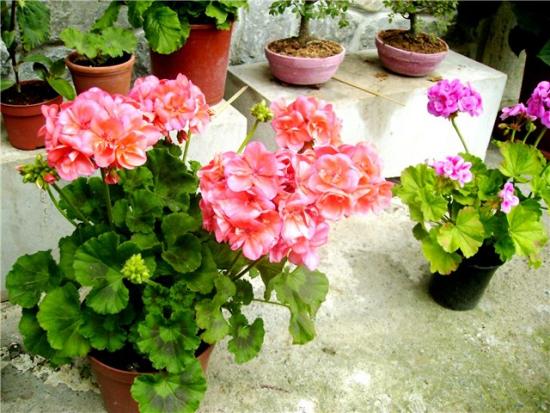
Once a year, preferably in March, needs to be replanted geranium in another pot. It should be remembered that geranium does not like very large pots and excessive moisture, so the container for the plant should also have good drainage.
Transplant procedure
- Prepare a substrate or buy a ready-made one. To prepare the substrate, you need turf soil, peat, humus and sand in equal proportions. For home flowers, you can use greenhouse soil with sand. You can purchase a ready-made substrate at any flower shop; you should choose a mixture called Geranium or Begonia, which may contain perlite or vermiculite.
- Trim off excess branches. Next, you need to trim the shoots, leaving 10 cm from the roots. This is done so that the geranium has a lush color. To do this, it is advisable to use a sharp knife, which then needs to be used to trim more buds and flowers.
Geranium propagation occurs in two ways:
- Using seeds
- By cuttings
Using seeds is important if you want to get a new variety of pelargonium. If geranium grows in the garden, you need to collect the seeds in August and immediately after collecting sow them in the soil. However, it is better to sow them closer to winter, this will allow them to sprout en masse by the end of spring, and in just a year they will bloom.
You need to cut the cuttings with a sharp knife. It is advisable that each of the cuttings have 4-6 leaves, and the lowest pair of leaves on them should be removed. After this, you need to let the cuttings dry in the air for several hours.
You can let them take root in plain water or in a mixture of peat and sand. If the temperature around does not exceed 17-20 C, the geranium will take root and can be transplanted into a container with soil after 2-3 weeks.
Problems in the care and diseases of indoor geranium
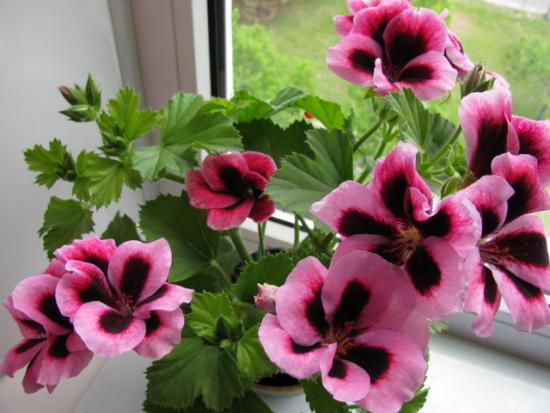
In most cases pelargonium gets sick as a result of non-compliance with care rules. These may be factors such as poor lighting, drafts, high humidity, fertilization with substances with an excessively high nitrogen content.
- Fungal diseases. They can be distinguished from other types of diseases by this sign: the shoot from below, closer to the root, becomes dark, the plant becomes lethargic. Such diseases are the result of increased moisture and temperature. In this case, you need to cut off the upper, undamaged and still healthy part and let it sprout roots, then move it to a separate pot.
- Whitefly.If you notice small white moths or white eggs on the lower surface of the leaf, all parasites should be removed and destroyed. After which it is advisable to treat the surface of the plant with insecticides.
- Rust. If you find rust on pelargonium, you need to spray it with Bordeaux solution.
- Bacterial or viral infections. If brown or black spots are detected, leaves dry out or curl, or shoots rot, you should immediately cut off the affected organs and spray an antibacterial solution on the living parts of the plant. If this does not help, then most likely the plant is affected by a soil virus. In this case, you need to sterilize the soil.
- Rotting, lethargy of leaves. If these symptoms are not accompanied by any other of the above descriptions, then the matter is due to improper care, namely, excess moisture. Here you just need to reduce the amount of watering.
- Yellowing, whitening, or discoloration of leaves means that the plant does not have enough water. Here, on the contrary, you need to increase the number of waterings, but it is important not to overdo it.
Houseplants, among which one of the most beautiful is geranium, will become an excellent and indispensable element of decor, giving the house a warm, cozy atmosphere, saturating the air with useful antibacterial substances that can destroy harmful microorganisms in the air and have a beneficial effect on the respiratory and circulatory system of the human body.
Educational video about planting geraniums:
Interesting information about the vegetable garden

